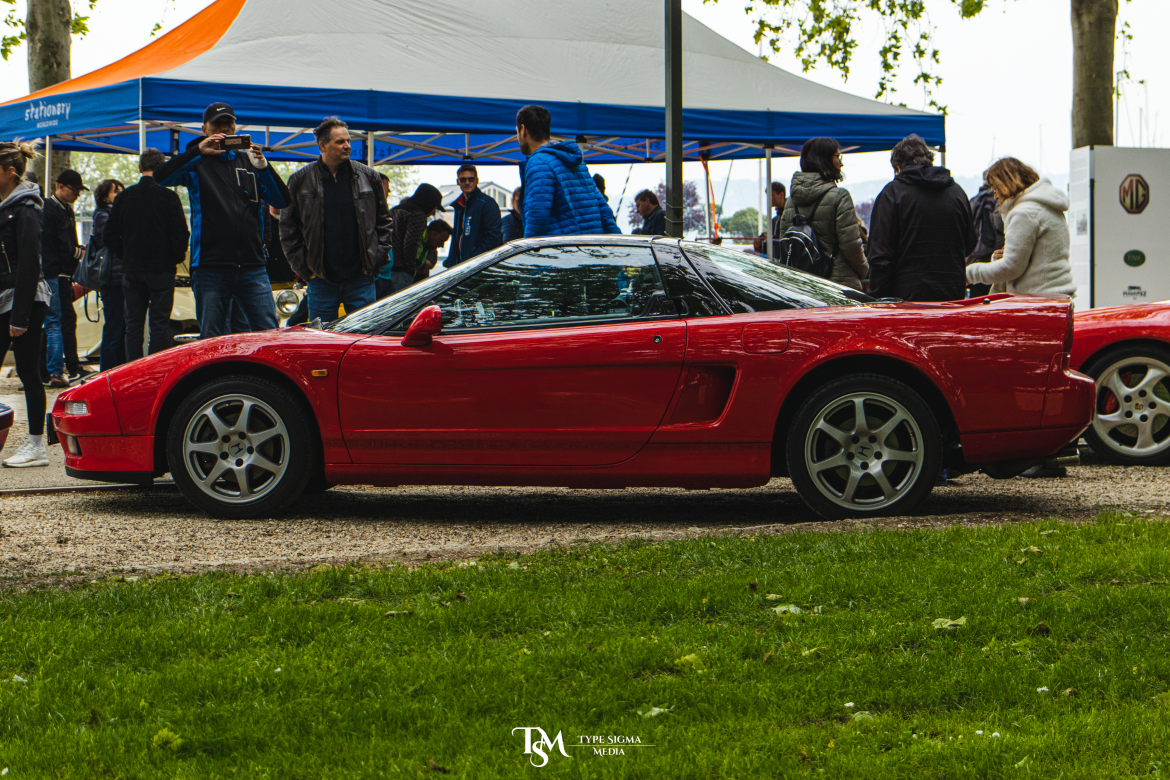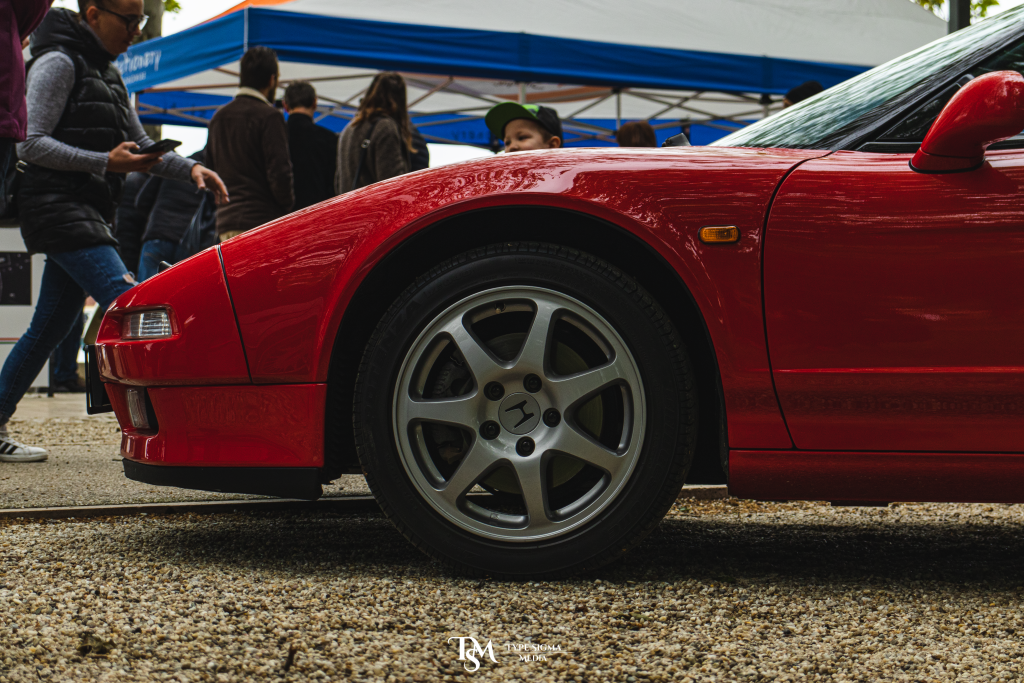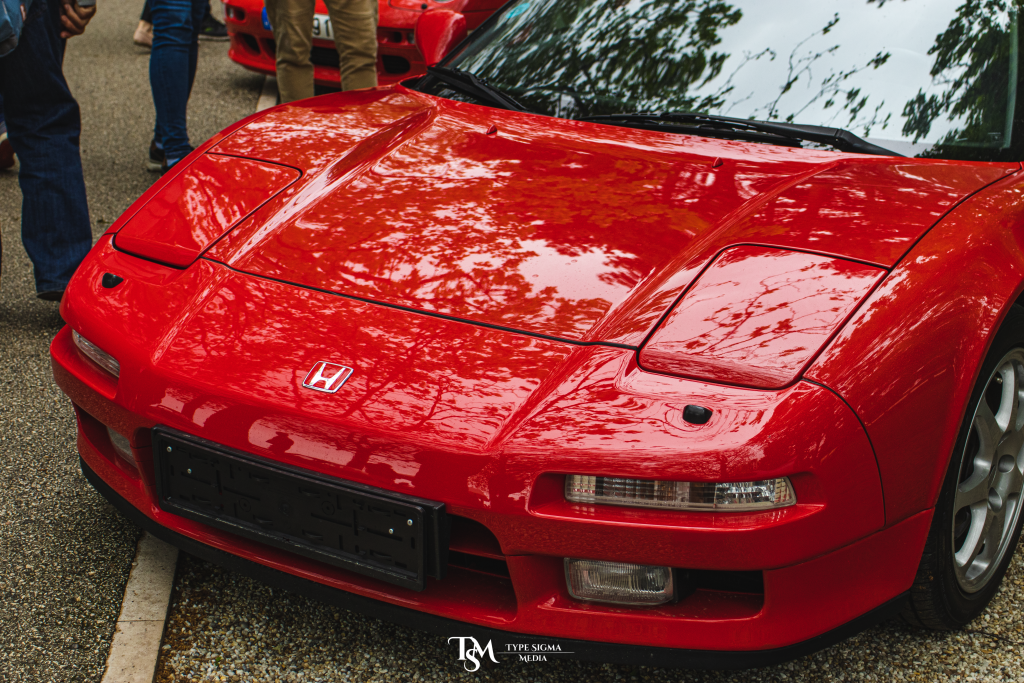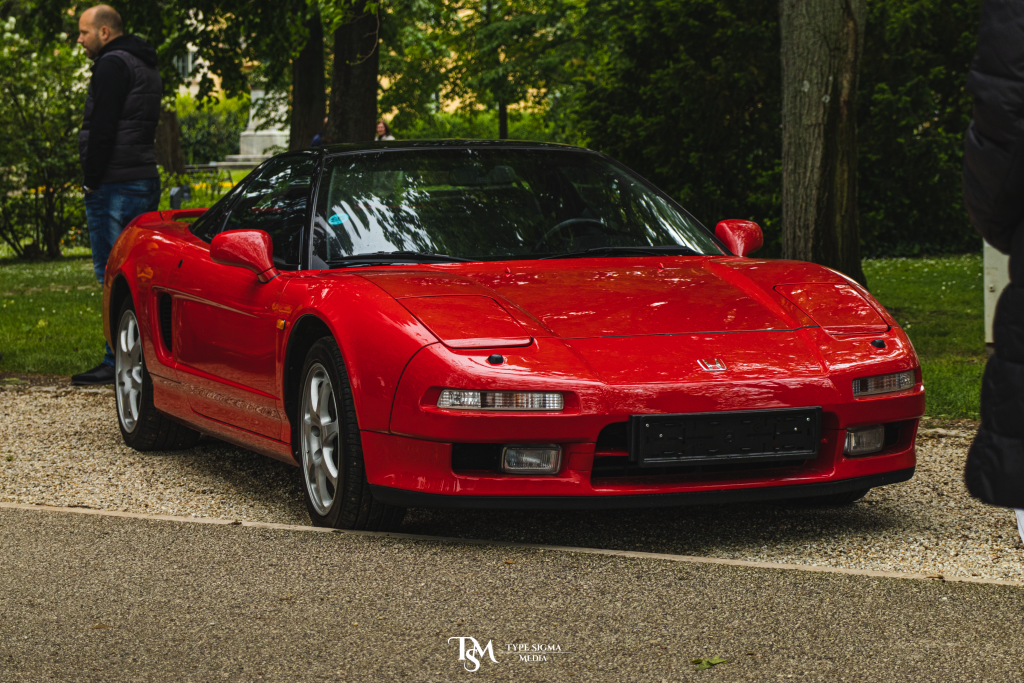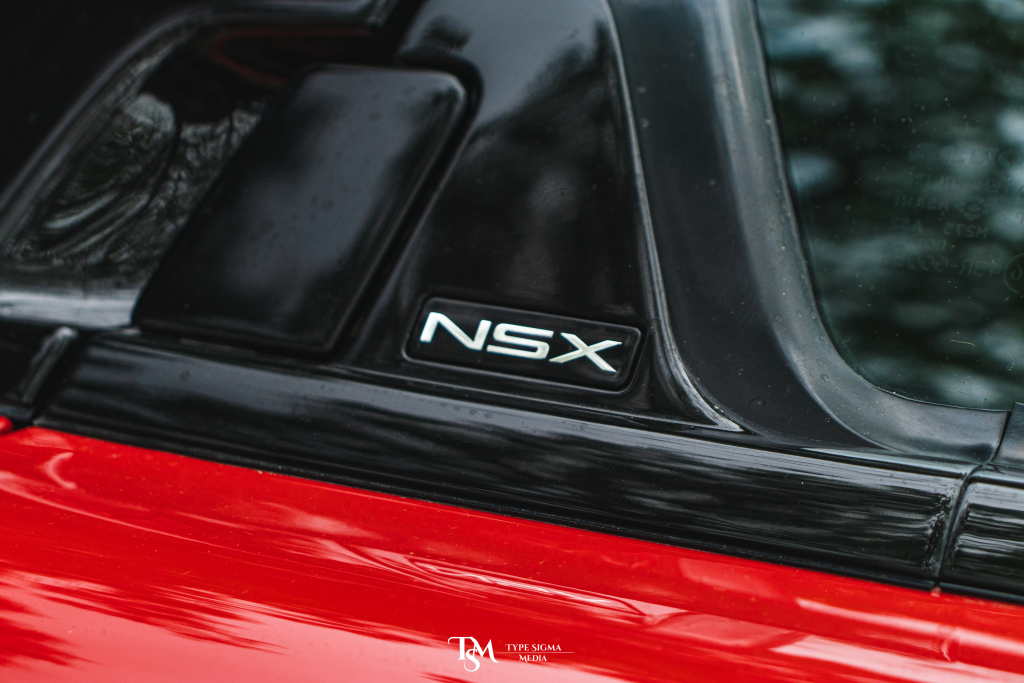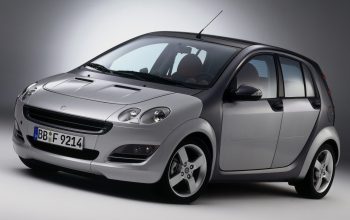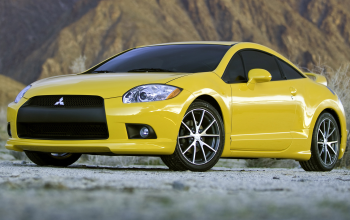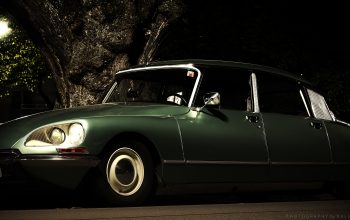Chapter 1: A Whole New Platform In The Making
Honda didn’t quite have the reputation to make anything other than front-wheel-driven street cars in 1984. They decided that Honda needed a shift in terms of drivetrains and format because they believed it could benefit Honda as it could enhance the flexibility of frame design and packaging. Therefore, they began basic research on a new drive system at the Wako R&D Center in January 1984. They turned their focus towards an underfloor, rear-wheel-drive mid-engine, or midship design. This new goal presented itself with a lot of new obstacles, including the most obvious one out of all: designing a whole new drive that had the engine in the rear half of the vehicle, which was a first for Honda, at least in a road-going car.
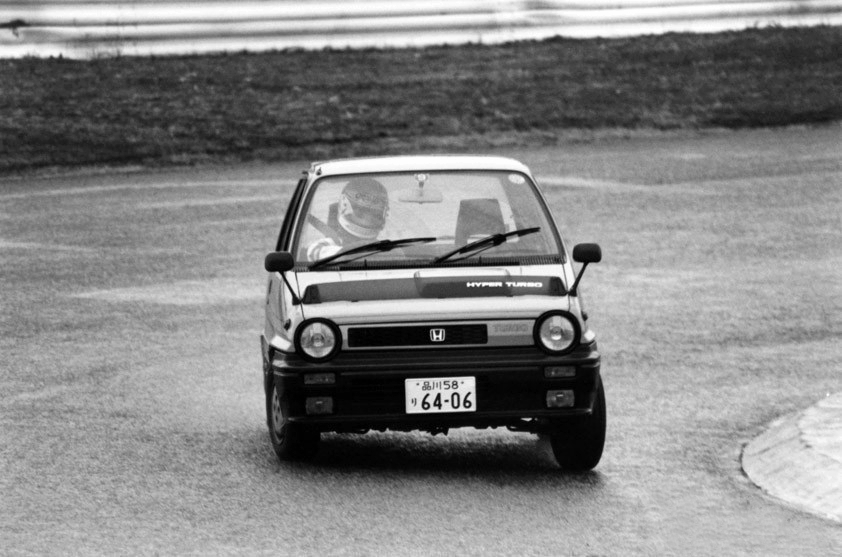
The same year, the development team, to further continue their research, decided to create a test car, and the test car was none other than a now-mid-engine Honda City Kei car.
During the test drive of this odd vehicle, the team was impressed by how uniquely the test car handled compared to the previous front wheel drive and front engine layout.
This new layout presented itself as superior in terms of handling characteristics. However, the research team couldn’t focus their efforts further on this platform testing because the project has been put aside. Here’s why: The current technology available to Honda places certain limits on the car’s ability to show the team any real advantages over the normal front engine and front-wheel drive layout in any meaningful way.
So with that, the project was shelved. However, the development team simply could not forget the experience with the new platform and its superior abilities, and they were eager to continue research. Their efforts and comments did not go unnoticed as more and more voices rose to replicate the handling characteristics of the mid-engine Honda City in another vehicle. However, the focus of this newfound interest did not go towards improving current cars but rather towards creating a low-center-of-gravity car with a dynamic and thrilling driving experience. Sounds familiar? Those are the qualities usually used to describe a sports car.
“It’s the dream of every development engineer to create a sportscar.”
Shigeru Uehara
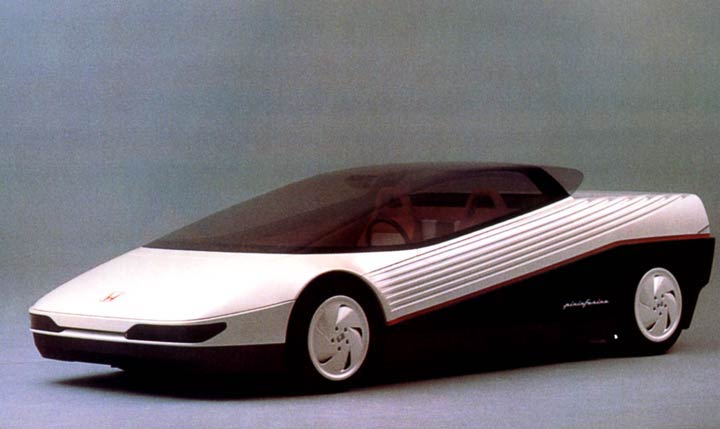
Chapter 2: Let’s Make A Sports Car!
With continued efforts, research continued, now with a test car fabricated from a Honda CRX. This was the same year that Honda decided to return to the F1 racing series. So with the F1 program in mind, the research team had their hopes up, for it was now more likely that Honda would actually make a sports car. And they weren’t wrong, as it was getting more common to have that discussion during board meetings.

The vision of the new Honda sports car, whose sleek design was inspired by the F16 fighter jet, was now running under the new project codenamed “NS-X”.
“What we need is a midrange, midship car that provides superior performance yet requires equally superior driving skills in order to be controlled. We can then maximize the dynamic performance of this car to a degree that’s as close as possible to an F-1 machine.”
Chapter 3: Creating Innovation
The first prototype of the NS-X was completed in 1986. During this time period, they were considering two materials for the body: One was sheet steel, which wasn’t favored as it did not aim to achieve Honda’s vision to create a car for the road in the mid-range market that would have F1-like performance. The development team aimed to equip the car with cutting-edge car accessories at the time, such as power windows, anti-lock brakes, and traction control. Considering all those factors, it was important to keep the dry weight of the car low; therefore, the focus turned towards the other material: aluminum. It was decided that in order to minimize the weight of the car, an all-aluminum monocoque chassis needed to be implemented. This was a first, not only for Honda but for any car maker. Some important points favor aluminum over steel, like ease of recycling, resistance against corrosion, and being a lot lighter than steel. However, this method has several drawbacks, mostly the cost and the complexity of aluminum molding and welding. This left Honda’s suppliers perplexed about Honda’s seriousness about said project; however, Honda kindly explained everything to skeptics of this new idea.
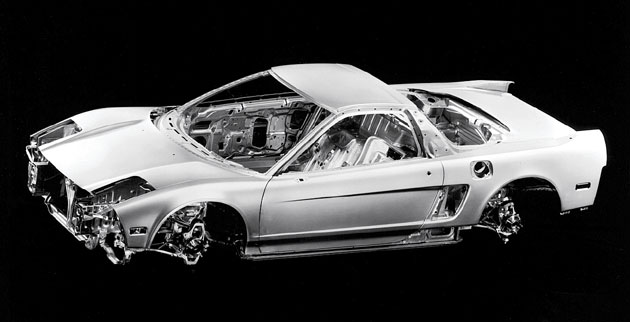
The world’s first ever mass-produced monocoque car body
Problems eventually arose, so a new formation process had to be implemented to meet Honda’s goals. This process helped achieve a very rigid honeycomb aluminum frame.
The NS-X was powered by an all-aluminum 3-liter V6 featuring Honda’s VTEC system.
Chapter 4: Chasing The Dream Of Performance
Honda conducted several instances to make the NS-X the very car they aimed it to be, so they spent an entire month testing the second prototype around the Suzuki circuit. Ayrton Senna, who had to come to Japan to test the new McLaren F1 car, agreed to Honda’s request to drive the NS-X.
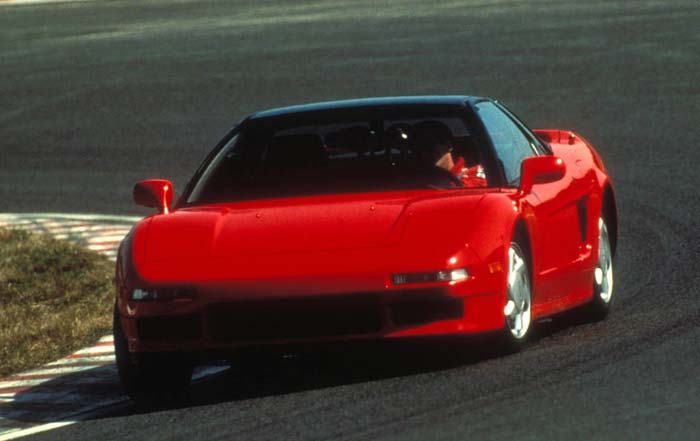
“I’m not sure I can really give you appropriate advice on a mass-production car, but I feel it’s a little fragile.”
Ayrton Senna
Honda aimed to rival Ferrari and Porsche, so they aimed for high rigidity figures; however, Senna could sense the car’s lack of additional rigidity that a normal person wouldn’t. And so development to increase rigidity began once again.
Chapter 5: The Green Hell
Thanks to Honda R&D Europe, the team was able to get a garage and an office set up within 2 km of the famous Nürburgring circuit. The testing on the ring aimed to be the ultimate test for Honda’s sports car.
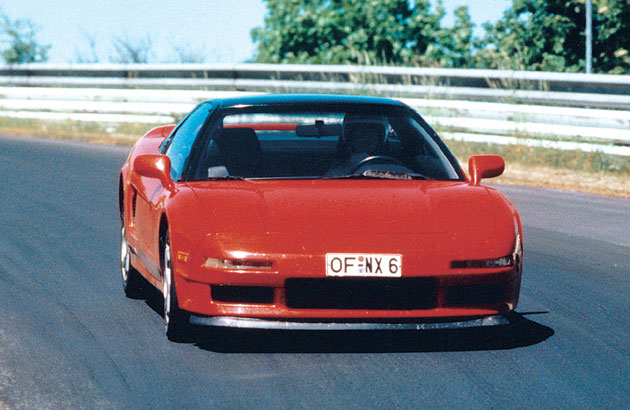
Honda decided to test on the Nürburgring circuit because they were confident that the difficult West-German track would reveal problems that they could not test for on Japanese tracks.
After some testing in harsh conditions,it was clear that the body’s rigidity was in fact poor, and that needed to be fixed in order to keep the car more controllable. Any data collected during the tests was immediately sent to the Japanese R&D team.
All the testing efforts at the Nürburgring resulted in an eventual 50% increase in body rigidity. After 8 months of development, they finally achieved their original goal: to create a world-class sports car that can rival Ferrari and Porsche.
Chapter 6: The Opinion Of The Public
The 81st Chicago Auto Show attracted a lot of media attention and a lot of observers towards a bright red sports car presented as Honda’s new NS-X (N-New, S-Sportscar, X-a mathematical symbol for unknown). The NS-X was introduced under Honda’s upscale brand in the US, Acura. Honda believed that this prototype would fascinate car enthusiasts all around the globe. And they were right; the NS-X got an overwhelmingly good reception.
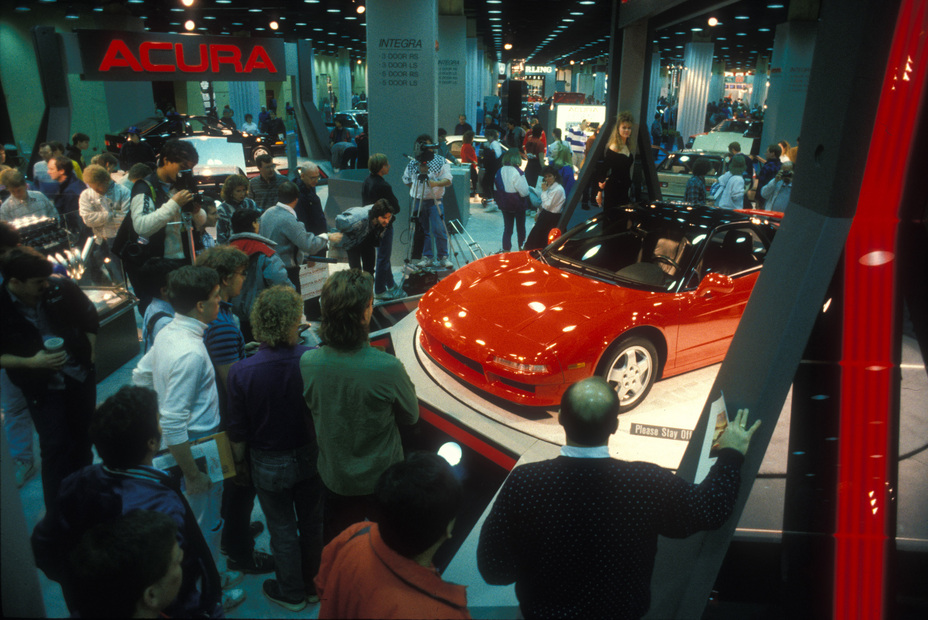
Crowd forming around Honda’s new NS-X prototype.
Honda launched a series of test drives for the NS-X in June 1989 around the US and Europe. The test drives in the US were held at California’s Laguna Seca circuit, and the European test drives were organized on the Nürburgring. The reception from both was overwhelmingly positive, praising the car’s stability, rigidity, and the comfort of the cutting-edge accessories provided for comfort.
“This car will change the standard for modern sportscars,”
“All the cars we currently have are now history.”
The name NS-X was eventually carried onto the production model, as it already had huge publicity. now, however, as “NSX”.
Chapter 7: Achieving The Goal
A whole new production facility was completed to accommodate the needs to produce the lightweight, fully aluminum sports car that needed special manufacturing processes.
The sales of Honda’s new NSX started in September of 1990, with a lot of preorders already placed, with some being on a waiting list for as long as 3 years.
Chapter 8: Turning It Up To 11
The NSX later spawned a lot of different versions, including the further improved Honda NSX-R. Honda also made a Targa version of the NSX called the NSX-T. Japanese customers could get an NSX Type S and a Type S Zero, which featured extreme weight reduction using the now discontinued NSX-R’s suspension but keeping the NSX Type S’s sway bars for road usability. An NSX Alex Zanardi Edition was produced in 51 examples to commemorate Alex Zanardi’s two back-to-back CART IndyCar championship wins for Honda in 1997 and 1998. This trim was similar to the Type S.
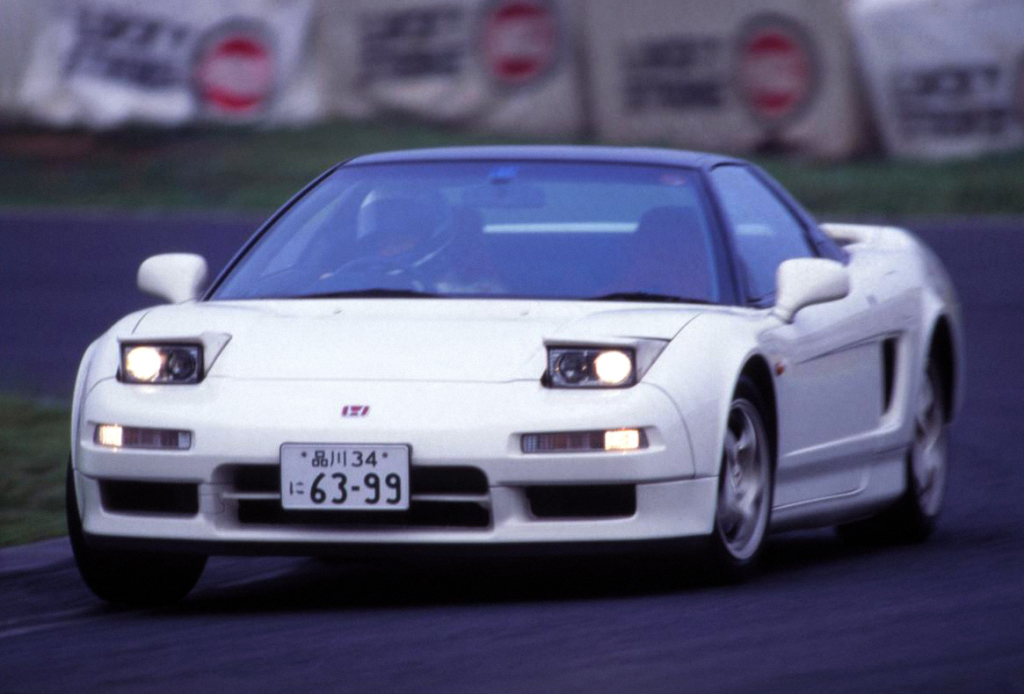
Chapter 9: The Legacy Of The Honda NSX
The Honda NSX undeniably changed the world of exotics forever. It showed that you can achieve the ultimate sports car and have all the comforts of modern technology and daily usability. It inspired a lot of rivals to go back to the drawing board and change the way how they made their cars.
The NSX is not only the sports car of the past but is also one of the most influential cars in automotive history. One example is the well-known McLaren F1, which was originally going to be based on the design of the Porsche 911, but Gordon Murray changed his mind when he saw the Honda NSX, which combined the usability of a German-made 911 with the performance of an Italian exotic in the shape of the NSX.
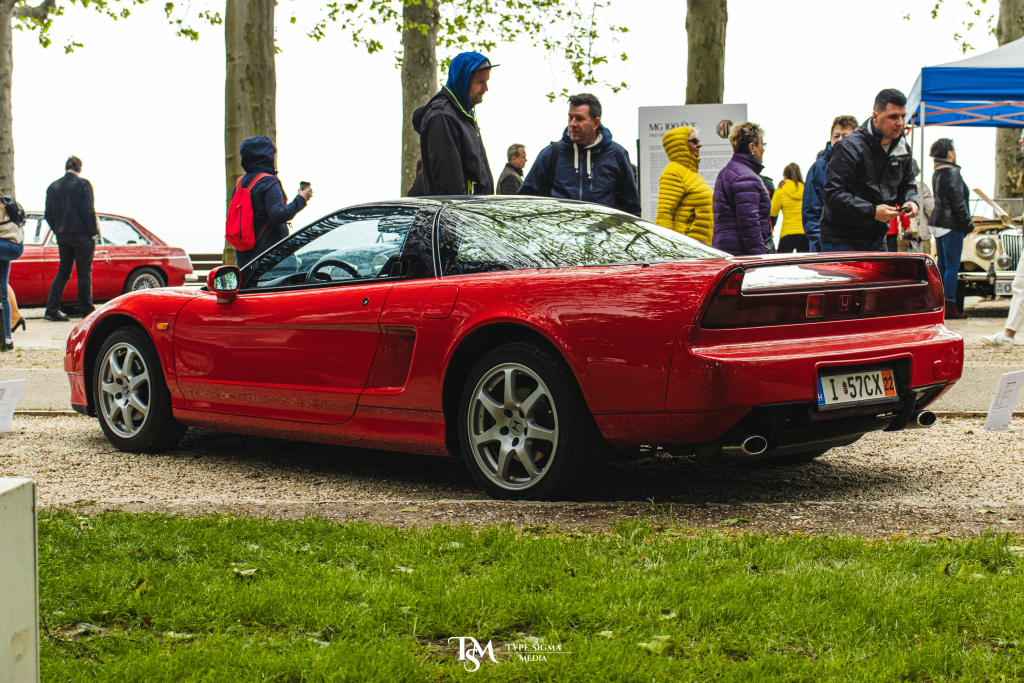
Chapter 10: A Verdict
All things said, the Honda NSX will go down in history as a forever classic and as an inevitable inpirational force in the automotive world.

